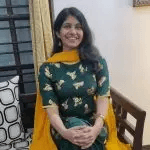
Manasvi C M
This article is a part of the reportage of an event – Degrees of Success.
The event hosted four engaging workshops for children: The ‘Family and I code together’ workshop simplified coding; ‘Become a researcher’ used an online virtual lab to understand genetics; ‘Build a Nano rover’ explored space engineering; Starburst Rocks’ moulded melted candies to understand geological concepts! It was a great destination for curious children to explore, learn and experiment in STEMM.
Colours of the rainbow
The event kicked off with an activity called “Family & I code”. In this session, 24 children and parents learnt to code in Scratch developed by MIT. Scratch simplifies code into a visual game. It’s almost like Lego – fix two blocks together to produce results. This way you can code for different voices, costumes, backgrounds and actions for a character called Sprite.
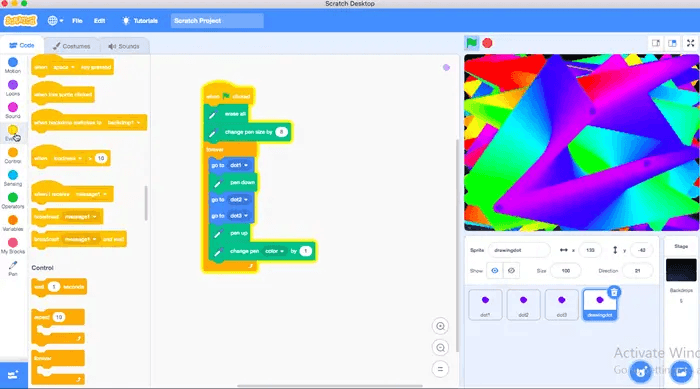
The main screen for coding on Scratch.
Nakhat Fatima, a scientist and host of the event asked the virtual room full of curious kids, ‘What is computer coding?’ Answers exploded through the chatbox – a language, an algorithm, and a set of instructions. They learnt to code a rainbow. After an hour of deliberation, when the code kicked in and the rainbow manifested itself on the screen, the kids exclaimed in the chatbox – “Soo cool!” “Would love to do this again!” “So fun!” The air buzzed and the children fervently shared their screens. They had coded for rainbows in all colours and shapes. Each uniquely theirs.
The different interpretations of the rainbow code by the participants
Source: Participant screen
Nano Rovers
What do invisible braces, baby formula and GPS have in common?
“There are numerous ways space exploration has improved technology!” says Bhairavi Shankar, Founder of Indus Space. Passionate about communicating space science and engineering, the team conducted a ‘Build a Nano Rover’ workshop.
The team donned sweet smiles and began the session with questions about space – What is a Rover? Why are the materials of a spacecraft chosen so carefully? What’s the name of the rover currently orbiting mars? Tap, Tap, Tap – The answers trickled in.
Bhairavi raved about rovers, ‘They are space buggies that scientists use to explore the terrains of other planets. Rovers are test runs used before the astronauts are sent.’
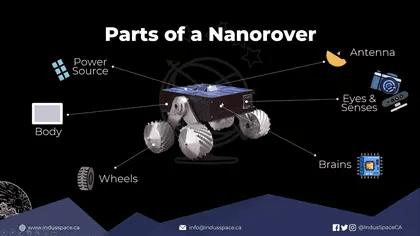
For the ease of understanding the team used slides to explain the Nano Rover.
Source: Indus space presentation
Nano Rovers are very small rovers and have the technology to move in low gravity. They are extremely light (approx. 100g). To build a Nano Rover the participants were asked to arrange for – skewers, balloons, cardboard, wheels, straws, elastic and decorations. Half an hour and a ton of sellotape later: the team had finished the model. A participant had a mirror on her rover and said, “This will give the people on earth a 360° view. As it will be in front of the camera – You’ll see everything close by.”

Materials needed for building the Nano Rover.
Source: Indus space presentation
Overall, it was an extremely engaging session that made the science and engineering of rovers interesting even for children. Additional details about Canada’s space programs and its contribution to space exploration was a nice touch. The infectious laughter of the Indus space team made up for the static coldness of the online medium of communication.
Geology Rocks!
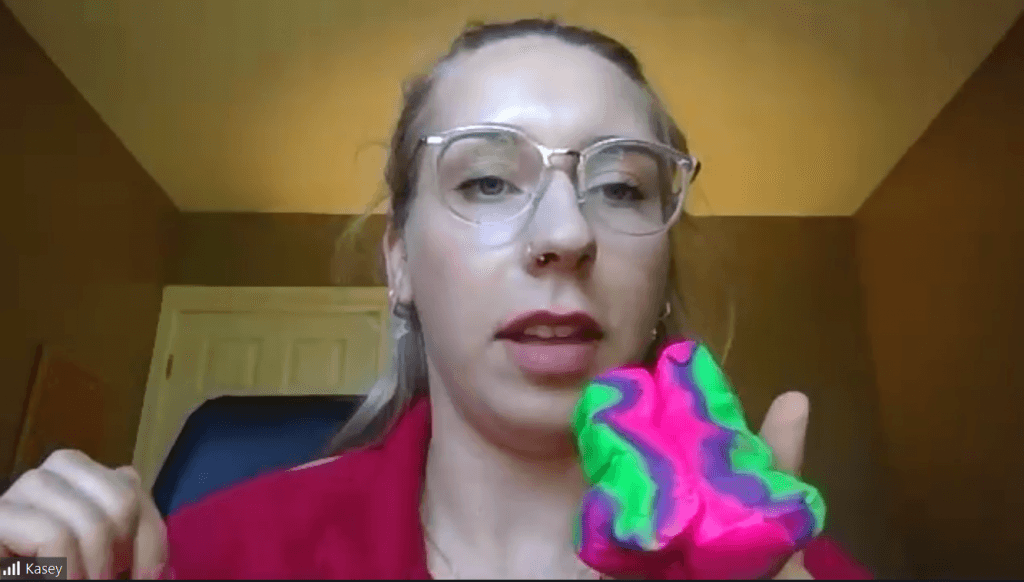
Kasey Stone from Mining Matters showing different types of folds on the earth surface.
Source: Presentation by Mining Matters
‘Starburst rocks’ and ‘Folding & Faulting’ were adventures into geology conducted by Kasey stone, Lesley Hymers & Kelly McBride from Mining Matters.
Starburst rocks
The first activity involved starburst candies to show the Rock cycle. Environmental factors (pressure, temperature) and time cause the creation and transformation of different types of rocks on the earth’s surface. This is called the Rock cycle. Kasey took a bunch of candies in her hand and squashed it between her warm palms to form a ball. ‘The little candies are sediments and when squashed together form a sedimentary rock’ she says.
Kasey warms her hands by rubbing them together – as if preparing for a wrestling match. Using pressure and heat from her palms she presses down on the starburst candies. ‘Squash it down like pancakes. Such layers are seen in metamorphic rocks and are referred to as foliation’ Informs Kasey. For the last rock type, Kasey takes out her secret weapon – the blowtorch to mimic the conditions of molten rocks. This causes the candies to bubble, melt and harden. Thus forming an igneous rock. ‘Each rock has a story. You have to carefully study them to hear it.’ adds the speaker.

Using the heat of a blowtorch to make an Igneous rock.
Source: Activity
Folding and Faulting
The second activity simplified the geological practices of ‘Folding & Faulting’ with the use of play-doh. The children were shown anticline & syncline formations. Dental floss was used to show the clear folding of the ‘rock’ layers.
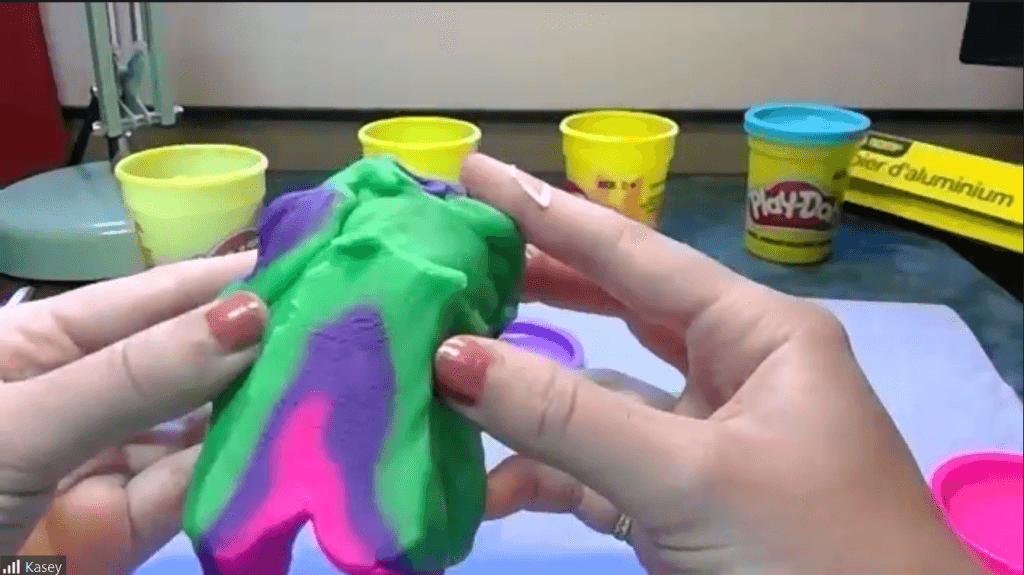
Anticline formation in rocks stimulated in play-doh.
Source: Activity
‘As a child, I loved all the sciences. It was difficult for me to choose between them. That’s why I choose Geology. It fuses all the sciences. If you love biology, you have palaeontology, if you love physics, you have Geophysics and if you love chemistry, you can study rock formations. There’s space for everyone in geology’ says Kasey.
In the chatbox, a child accurately rephrases Kasey’s passion, ‘Finding matters matters to you!’
Be a Researcher
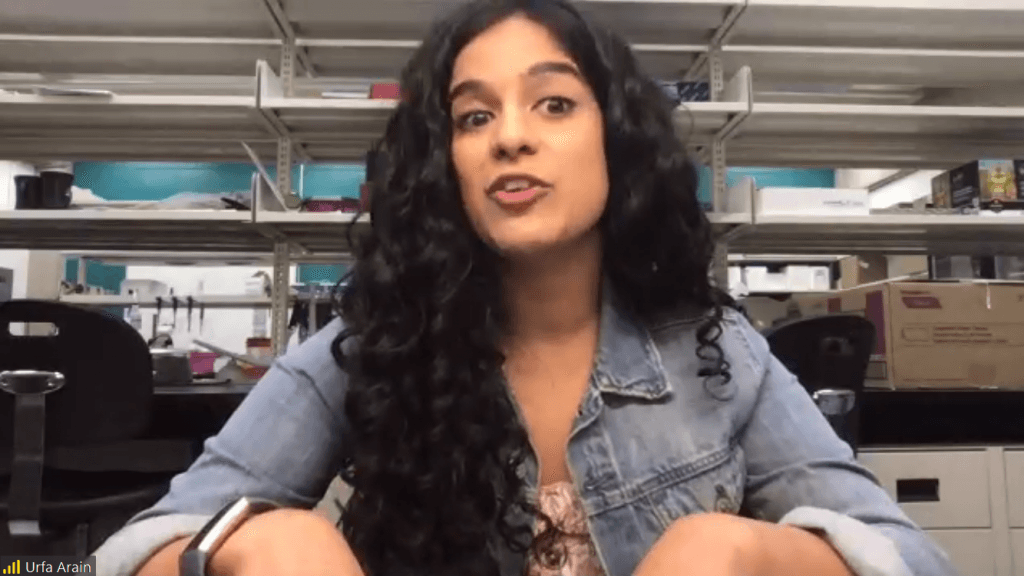
Urfan Arain from The Canadian Association for Girls In Science (CAGIS) breaking down concepts of Genetics.
Source: Talk
The more Urfa Arain spoke – more hypnotized the audience became. New words such as Genes, DNA and heredity wreaked havoc in curious little brains. The chatbox bubbled with questions – “My parents are both right-handed but I’m left-handed. Has this got to do with genes?” “If someone came and mixed up all the genes in my body, would I look completely different?” “Do diseases get passed down through genetics?”
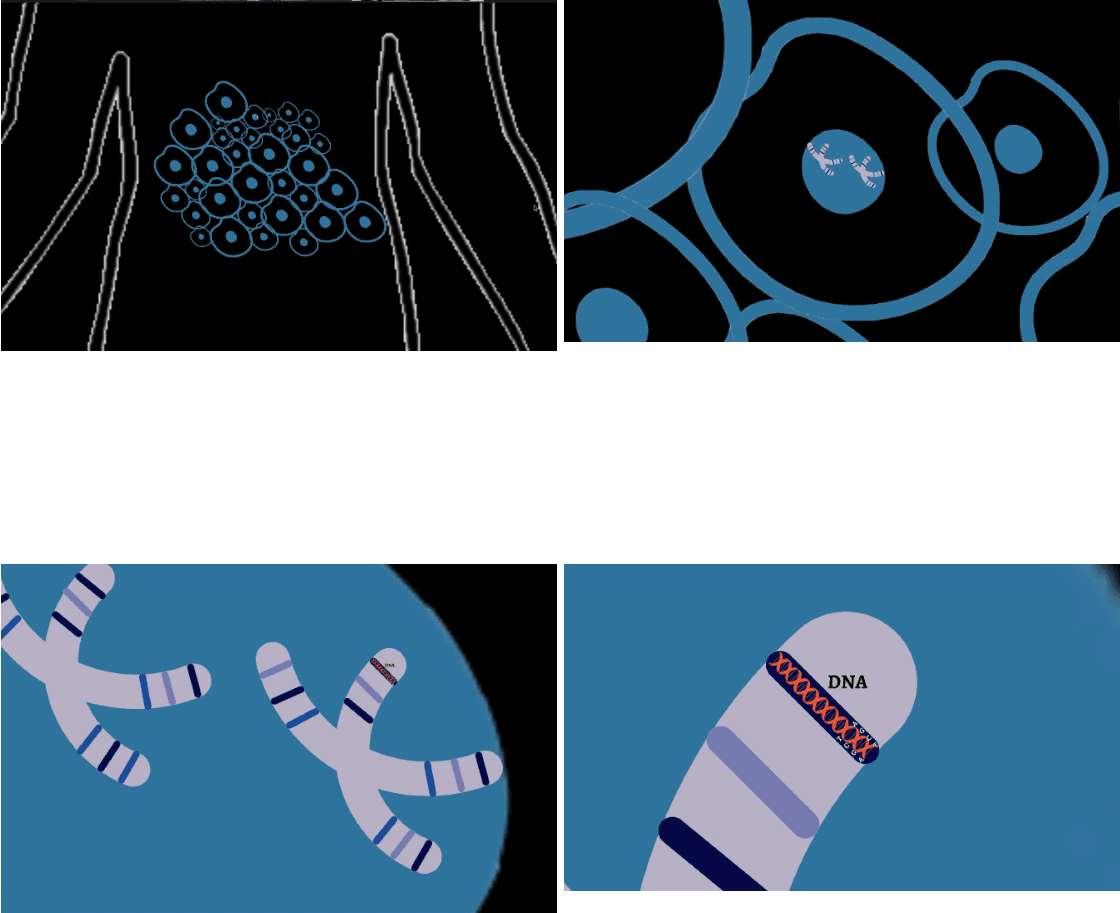
Genes are present in the chromosomes in cells of all living organisms
Source: Presentation by CAGIS
Urfa Arain, a developmental biologist co-hosted ‘Be a researcher’. The team explored Genes, DNA and heredity, through a virtual lab. The participants could order different kinds of fruit flies, conduct experiments, use the microscope, and observe the results – All within minutes. What would happen if a yellow-eyed female fruit fly mated with a red-eyed male fruit fly? Would the baby flies have red eyes or yellow eyes? The kids were unstoppable. They tried out various combinations in an effort to understand more.
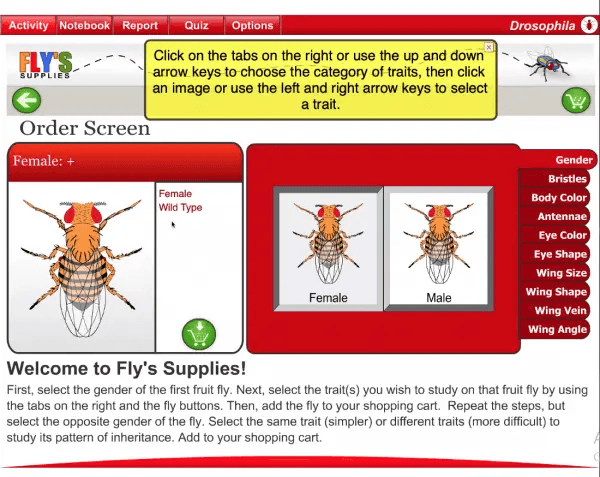
The virtual lab for culturing flies.
Source: Fly Lab, https://www.sciencecourseware.org/
At the end of the session, it was absolutely clear that this was the best activity session. The kids had enjoyed themselves and had a chance to apply their knowledge.
Edited by: Hansika Chhabra





